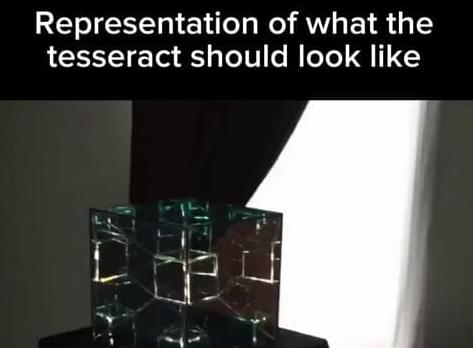There has been a sharp uptick in crimes specifically targeting Muslim and Jewish people since the war between Israel and Hamas broke out in October 2023.
Get the latest international news and world events from around the world.

We cannot see the fourth dimension but according to studies, this is what a tesseract should be【video】
We cannot see the fourth dimension but according to studies, this is what a tesseract should be. The version without sound. Your browser does not support the video tag. original link We cannot see the fourth dimension but according to studies, this is what a tesseract should be by redditor WorldlyBlackberry819.

Aliens Will Never Invade Earth Because It’s ‘Trash’
The young man quickly replied, “Aliens will never invade Earth because it’s trash.”
“Total trash,” his sister confirmed.
They seemed as sure of that as the sun rising in the East and setting in the West. To them, our planet has become nothing more than a cosmic landfill in our galaxy, populated with the worst that humanity can offer. Aliens, they assured me, would no more come here than we would jump into a vat of raw sewage.



Tesla Unveils $120K Cybertruck Foundation Edition with Advanced Features
Tesla has introduced new features for the Cybertruck, including the ability to detect speed and red light cameras, a 360° live camera feature, and innovative technology that will shape the future of electric vehicles.
Questions to inspire discussion.
What new features has Tesla introduced for the Cybertruck?
—Tesla has updated their navigation system to include features such as detecting speed and red light cameras, FSD beta version 11.4.1, U-turn control, and driver monitoring using the cabin camera.
11 Essential Eliminations for Personal Growth
🌟 **Transform Your Life with Stoic Wisdom! 🧘♂️📚**
Discover the profound teachings of Stoic philosopher Marcus Aurelius as we embark on a journey of self-discovery. In this video, we delve into 11 crucial aspects to eliminate from your life, guided by Aurelius’ wisdom. It’s not just about passively observing; we invite you to actively engage by sharing your perspectives on each topic covered.
🌈 **An Invitation to Self-Reflection and Growth 🚀**
Join us on this transformative adventure where we explore vital aspects of human existence. Stay with us until the end for more than just knowledge; it’s an opportunity for deep self-reflection and meaningful change in your life. Subscribe and like the video to support the channel, ensuring more insightful content in the future.
🛤️ **Navigating Life’s Journey with Purpose 🌱**
From useless goals to the thoughtless use of social media, we unravel these obstacles to personal growth. Learn to make deliberate choices, cultivate self-compassion, and embrace your authentic self. Marcus Aurelius’s philosophy guides us in responding to injustice by focusing on personal development and inner strength.
Unlock Adult Learning Potential: Neuroscientist Reveals Best Methods
Adults can learn new skills and reshape their neural circuitry through focused effort, intensity, and utilizing psychological means and supplements to increase brain plasticity.
Questions to inspire discussion.
Can adults learn new skills effectively?
—Yes, adults can learn new skills effectively through focused effort and intensity, reshaping their neural circuitry in the process.
Boost Neuroplasticity & Strengthen Your Brain: Expert Tips
IN THIS EPISODE OF THE HUMAN UPGRADE™…you’ll learn how much control you can actually have over your brain. There’s a new way of accessing your meat operating system that adds an important element that’s been missing from the brain training conversation. Moha Bensofia joins the show to explain a new piece of neurotech called Mendi. He shares the benefits of getting more blood to the front of your brain. Mendi uses neurofeedback to provide visual feedback based on your brain activity.
A headset measures the activity while you play a fun brain-training mobile game. The system uses fNIRS technology to measure blood flow and oxygenation in the pre-frontal cortex of the brain. The brain training game requires focus and calmness, which increases activity and control of your brain’s pathways.